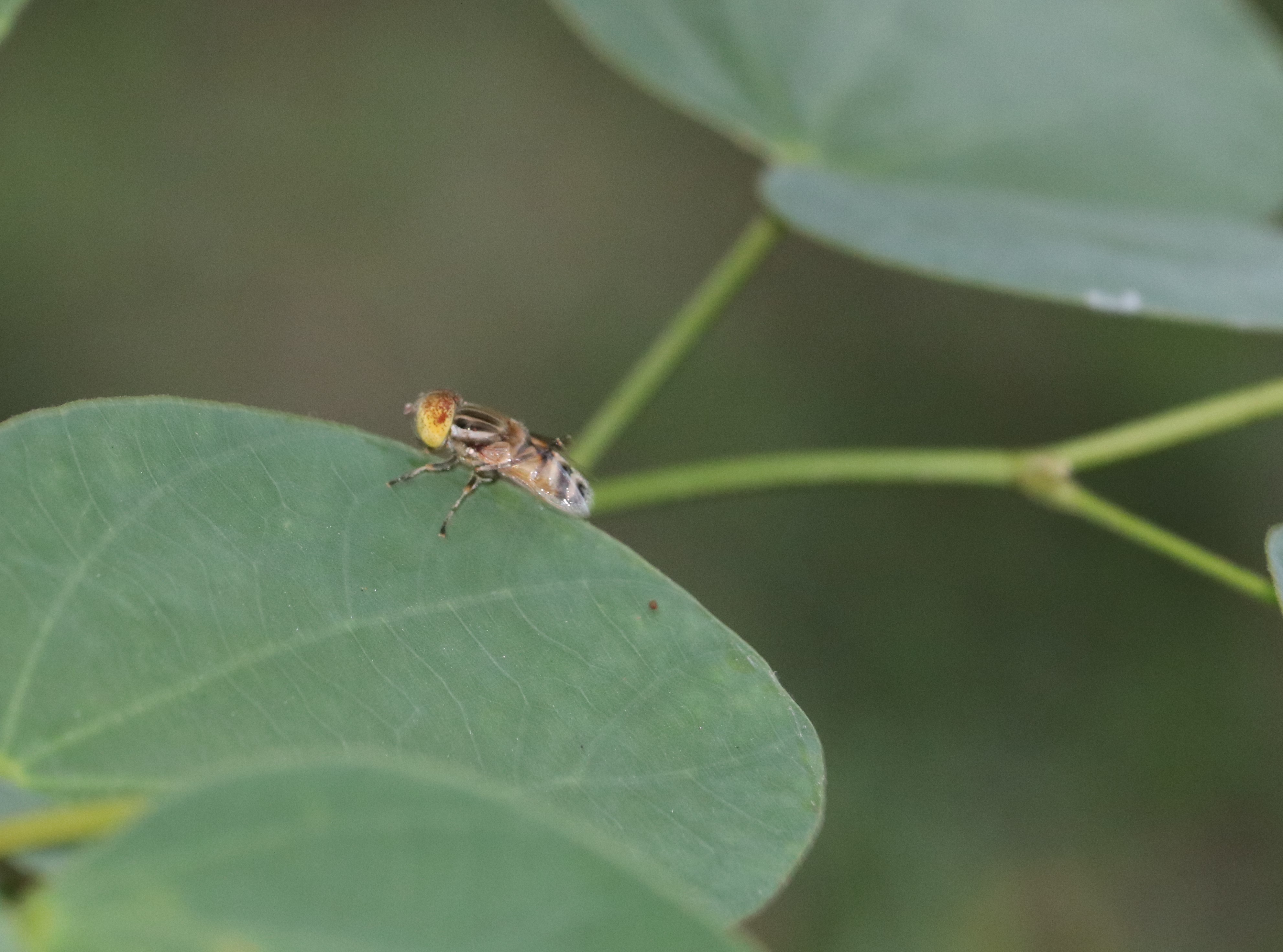apis florea
Species
Families
Local Names
Genus
Native/Introduced
DNA Barcode
Description
Dwarf honey bee (apis florea)
The dwarf honey bee (or red dwarf honey bee), Apis florea, is one of two species of small, wild honey bees of southern and southeastern Asia. It has a much wider distribution than its sister species, Apis andreniformis. First identified in the late 18th century, Apis florea is unique for its morphology, foraging behavior and defensive mechanisms like making a piping noise. Apis florea have open nests and small colonies, which makes them more susceptible to predation than cavity nesters with large numbers of defensive workers. These honey bees are important pollinators and therefore commodified in countries like Cambodia.
A. florea spans the continents of Asia and Africa and is most commonly seen in Southeastern Asia (Thailand), the Northeastern part of India, China, and forested regions of the Middle East. A. florea reach a decision about a new nesting site via dancing. They decide on a site when the largest number of individuals dance in the direction of the new site. The workers use an auditory signal of piping to indicate a decision about a new site has been reached, with the top of the swarm lifting off into the air first, followed by the bottom of the swarm and then the middle reaching the air last, but all within one minute of the swarm’s initial lift off. Since dancing is a common mechanism of communicating about a new nesting site in both A. florea and A. mellifera, it is suggested that this form of nest site selection evolved in the common ancestor of Apis. However, A. florea do not re-evaluate a site before several individuals move to the new site like A. mellifera does. Instead, swarms travel to the new site as a group and leave to a new site if it is later discovered to be unsuitable. This makes searching for new sites a much faster process for A. florea, but not necessarily more accurate.
Apis florea nest, Thailand. The nest is 20 cm in diameter and contains approximately 3600 cells on each side. The reflective substance on the branch either side of the nest is propolis which acts as a sticky and chemically repellent barrier to protect the nest from ants, particularly weaver ants (Oecophylla smaragdina). The curtain of bees covering the comb is 3–4 bees thick (~10 mm).
Apis florea are found in southeastern Asian countries, especially in Thailand, Iran, Oman, United Arab Emirates, India, Myanmar, and some parts of China, Cambodia, and Vietnam. Since 1985 Apis florea is also found in Sudan. They live in forest habitats but they are also pollinators of tropical fruit crops in Thailand. Apis florea build exposed nests always with a single comb on a single branch. If they are building a new nest near to the old one, they salvage the wax from the old nest. Other species of honeybee do not exhibit this behavior, perhaps because of the risk of contaminating pathogens. This behavior is only observed in this species. Even within the species this behavior differs, the colonies that migrate less than 200 meters engage in wax recycling, but the colonies that migrate longer distances do not.
A. florea have two main interactions with humans: hunting and tourism. In Asia, there is widespread hunting of these bees because they are harmless to humans and they also have social and cultural significance to the two main religions in Asia: Hindu and Buddhism. In Hindu culture, the honey from such bees represents “the blendedness of everything” and is served with other ingredients in a variety of traditional ceremonies. In Buddhist culture, gifting honey to fellow monks is considered equal to giving alms, one of the most expressive ways that one can reward a good deed. In addition to being widely hunted and holding high cultural value, honey hunting sites are considered tourist sites in places like Nepal. Increased deforestation due to industrialization has enhanced bee migration to areas which are less populated, thus human interaction is mainly limited to fairly rural regions of Asia.









































































































































